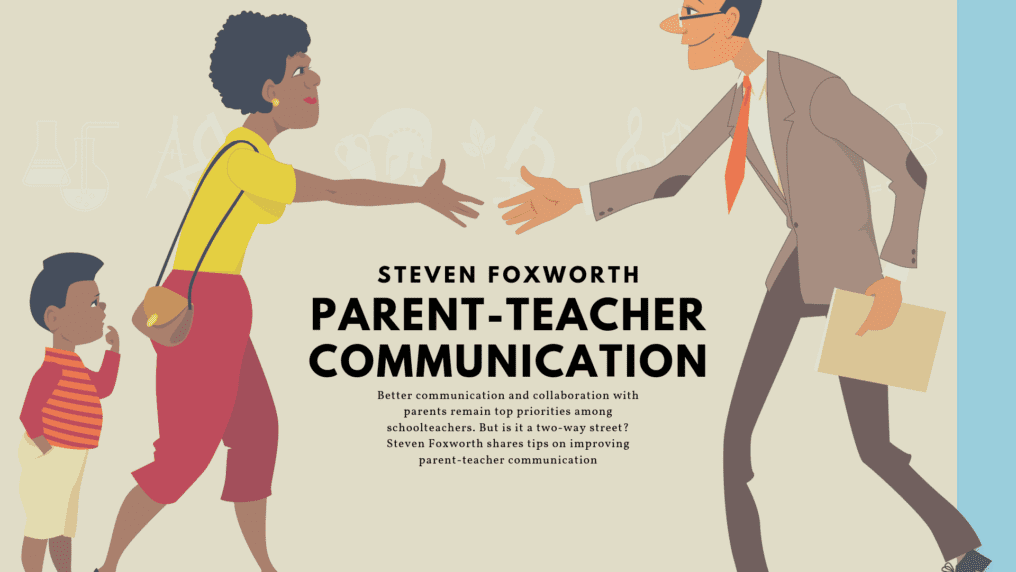
Better communication and collaboration with parents remain a top priority among schoolteachers. But who bears the burden of creating better ways to communicate: the teacher? The parent? Or the school district at large?
While many schools adopt standard communication practices that ensure consistency across channels, teachers may have the best insight on how to reach out to their students’ parents. After all, they know what messages they need to communicate and they’re the direct point of contact for parents.
Seasoned social studies teacher Steven Foxworth has experienced the power of increasing parent communication firsthand. He uses the following five strategies to bridge the communication gap between parents and teachers to set every student up for success in the classroom:
1. Be Selective in Communication Channels
One of the most common ways to sabotage your parent/teacher communication strategy is to try to manage too many outlets. Granted, you want to offer parents an easy way to keep in touch, and what works for one parent might not be ideal for another.
But Foxworth notes that there can be too much of a good thing, and at that point, your communication efforts implode because they are suddenly too complicated to take advantage of. When you have too many options, parents are not sure which one to use.
Teachers are in charge of updating each communication channel, be it agenda notes, class website, blog, calendar, texting app, social media, etc. He recommends teachers stick to one or two channels that you can commit to and avoid creating confusion among your parents. This includes trying to utilize the same application if possible, whether it be an online platform or the traditional tangible paper-based tools. Furthermore, when each teacher uses a different online platform, it can be very frustrating for a parent. Oftentimes there are instances where a parent can be receiving messages from three different apps, emails, and text messages for just one student.
2. Get Parent Buy-In
Communication only works if both the sending and receiving parties are making the effort. Foxworth begins each school year by preparing parents and students on what they can expect regarding classroom communications. The easiest way to do this is to have students sign up with technology while the teacher is talking to the parents on a night like ‘orientation day’ or open houses. This lets the parent know that they are important and empowers the student from the get-go by giving them a task on parent night at the beginning of the school year. Sure you can import contacts digitally or handwrite names on agendas but it is way more fun to have the kids set it up for you.
Communications begin on Day 1 as well to set the tone for the rest of the year. But it also gives Foxworth an idea of which parents got the memo and which ones he needs to reach out to again to ensure they understand how they can find information and send feedback to him. Most parents are willing to communicate through mass media apps like Remind101 or Class Dojo, where updates on classwork, lessons, and homework expectations can be sent to all parents and those with questions can respond. This greatly eliminates the need to call all parents and only a small portion that is not active may need more focused communication.
3. Encourage Two-Way Communication
Effective classroom communication does not just report cards and announcements. Parents need the ability to ask questions, give feedback, and keep tabs on their student’s performance in between progress reports and report cards. It is imperative that teachers maintain a positive attitude and work diligently to foster a sense of trust. According to Steven Foxworth, parents and guardians can often provide invaluable insight, so it is vital to let them share their input.
Only through two-way communication can a mutually beneficial relationship develop, as it is the whole purpose of investing so much time and effort into a communication strategy.
4. Commit to Consistency
Parents need to know when to expect updates from teachers. This level of consistency not only sets and maintains expectations but can also instill good faith in the parents that the teacher is reliable and dedicated to the students’ success.
The frequency is not the most important factor, but however often you decide to communicate, make sure you stick to it. This also can prevent confrontation if you have been having good, positive feedback with a parent and then a student misses an assignment or class time. Parents are much more likely to support the teacher if there is a consistent open line of communication versus a teacher who calls only once a month when a student is about to receive a less than desirable grade on a report card.
5. Make it Easy to Send Feedback
Getting parent feedback is more likely when you make it easy on the parent to do so. They do not want to jump through hoops to ask a question or check on their child’s progress.
Rather, Foxworth acknowledges the value of re-evaluating your communication strategies at the beginning of each year. Each new school year brings a new group of students and parents, as well as new technology in communications. It is prudent to ensure your strategy meets the needs and expectations of parwHATents and not just what is easiest on yourself. Remember, families of these children go through many of the same life experiences that we all do. They move homes, lose family members, get sick, etc. So it is important that you can connect with the community you service easily and break down barriers.
Connect and Be Heard!
Strong parent-teacher relationships are the driving force behind successful students. Parental involvement contributes to a positive atmosphere that reinforces education at home and in the classroom so that students can have ongoing, consistent support through their academic journey.
Even with more than a decade of experience in the classroom, Steven Foxworth continues to find ways to build a stronger bridge between parents and teachers. Other teachers are quick to follow his lead because they have seen the results, he brings in creating an environment where every student can succeed.
Read Also:




























